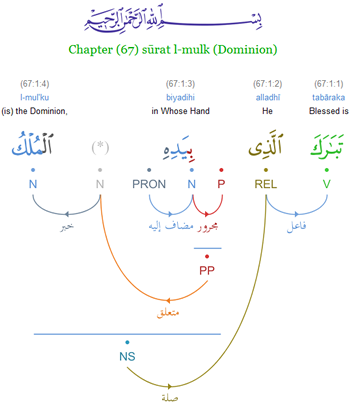|
Hebrew Alphabet
The Hebrew alphabet (, ), known variously by scholars as the Ktav Ashuri, Jewish script, square script and block script, is a unicase, unicameral abjad script used in the writing of the Hebrew language and other Jewish languages, most notably Yiddish, Judaeo-Spanish, Ladino, Judeo-Arabic languages, Judeo-Arabic, and Judeo-Persian. In modern Hebrew, vowels are increasingly introduced. It is also used informally in Israel to write Levantine Arabic, especially among Druze in Israel, Druze. It is an offshoot of the Aramaic alphabet, Imperial Aramaic alphabet, which flourished during the Achaemenid Empire and which itself derives from the Phoenician alphabet. Historically, a different abjad script was used to write Hebrew: the original, old Hebrew script, now known as the Paleo-Hebrew alphabet, has been largely preserved in a variant form as the Samaritan script, Samaritan alphabet, and is still used by the Samaritans. The present ''Jewish script'' or ''square script'', on the cont ... [...More Info...] [...Related Items...] OR: [Wikipedia] [Google] [Baidu] |
Hebrew Numerals
The system of Hebrew numerals is a quasi-decimal alphabetic numeral system using the letters of the Hebrew alphabet. The system was adapted from that of the Greek numerals sometime between 200 and 78 BCE, the latter being the date of the earliest archeological evidence. The current numeral system is also known as the ''Hebrew alphabetic numerals'' to contrast with earlier systems of writing numerals used in classical antiquity. These systems were inherited from usage in the Aramaic and Phoenician scripts, attested from in the Samaria Ostraca. The Greek system was adopted in Hellenistic Judaism and had been in use in Greece since about the 5th century BCE. In this system, there is no notation for zero, and the numeric values for individual letters are added together. Each unit (1, 2, ..., 9) is assigned a separate letter, each tens (10, 20, ..., 90) a separate letter, and the first four hundreds (100, 200, 300, 400) a separate letter. The later hundreds (500, 600, 700, 8 ... [...More Info...] [...Related Items...] OR: [Wikipedia] [Google] [Baidu] |
Voiceless Uvular Plosive
The voiceless uvular plosive or stop is a type of consonantal sound, used in some spoken languages. It is pronounced like a voiceless velar plosive , except that the tongue makes contact not on the soft palate but on the uvula. The symbol in the International Phonetic Alphabet that represents this sound is , and the equivalent X-SAMPA symbol is q. There is also the voiceless pre-uvular plosiveInstead of "pre-uvular", it can be called "advanced uvular", "fronted uvular", "post-velar", "retracted velar" or "backed velar". For simplicity, this article uses only the term "pre-uvular". in some languages, which is articulated slightly more front compared with the place of articulation of the prototypical uvular consonant, though not as front as the prototypical velar consonant. The International Phonetic Alphabet does not have a separate symbol for that sound, though it can be transcribed as or (both symbols denote an advanced ) or ( retracted ). The equivalent X-SAMPA symbols are ... [...More Info...] [...Related Items...] OR: [Wikipedia] [Google] [Baidu] |
Emphatic Consonant
In Semitic linguistics, an emphatic consonant is an obstruent consonant which originally contrasted, and often still contrasts, with an analogous voiced or voiceless obstruent by means of a secondary articulation. In specific Semitic languages, the members of the emphatic series may be realized as uvularized, pharyngealized, velarized or ejective, or by plain voicing contrast; for instance, in Arabic, emphasis involves retraction of the dorsum (or root) of the tongue, which has variously been described as velarization or pharyngealization depending on where the locus of the retraction is assumed to be. The term is also used, to a lesser extent, to describe cognate series in other Afro-Asiatic languages, where they are typically realized as ejective, implosive or pharyngealized consonants. In Semitic studies, emphatic consonants are commonly transcribed using the convention of placing a dot under the closest plain consonant in the Latin alphabet. However, exceptions exist: o ... [...More Info...] [...Related Items...] OR: [Wikipedia] [Google] [Baidu] |
Letter (alphabet)
In a writing system, a letter is a grapheme that generally corresponds to a phoneme—the smallest functional unit of speech—though there is rarely total one-to-one correspondence between the two. An alphabet is a writing system that uses letters. Definition and usage A letter is a type of grapheme, the smallest functional unit within a writing system. Letters are graphemes that broadly correspond to phonemes, the smallest functional units of sound in speech. Similarly to how phonemes are combined to form spoken words, letters may be combined to form written words. A single phoneme may also be represented by multiple letters in sequence, collectively called a ''multigraph (orthography), multigraph''. Multigraphs include ''digraphs'' of two letters (e.g. English ''ch'', ''sh'', ''th''), and ''trigraphs'' of three letters (e.g. English ''tch''). The same letterform may be used in different alphabets while representing different phonemic categories. The Latin H, Greek eta , an ... [...More Info...] [...Related Items...] OR: [Wikipedia] [Google] [Baidu] |
Phoenician Alphabet
The Phoenician alphabet is an abjad (consonantal alphabet) used across the Mediterranean civilization of Phoenicia for most of the 1st millennium BC. It was one of the first alphabets, attested in Canaanite and Aramaic inscriptions found across the Mediterranean basin. In the history of writing systems, the Phoenician script also marked the first to have a fixed writing direction—while previous systems were multi-directional, Phoenician was written horizontally, from right to left. It developed directly from the Proto-Sinaitic script used during the Late Bronze Age, which was derived in turn from Egyptian hieroglyphs. The Phoenician alphabet was used to write Canaanite languages spoken during the Early Iron Age, sub-categorized by historians as Phoenician, Hebrew, Moabite, Ammonite and Edomite, as well as Old Aramaic. It was widely disseminated outside of the Canaanite sphere by Phoenician merchants across the Mediterranean, where it was adopted and adap ... [...More Info...] [...Related Items...] OR: [Wikipedia] [Google] [Baidu] |
Aramaic Alphabet
The ancient Aramaic alphabet was used to write the Aramaic languages spoken by ancient Aramean pre-Christian peoples throughout the Fertile Crescent. It was also adopted by other peoples as their own alphabet when empires and their subjects underwent linguistic Aramaization during a language shift for governing purposes — a precursor to Arabization centuries later — including among the Neo-Assyrian Empire, Assyrians and Neo-Babylonian Empire, Babylonians who permanently replaced their Akkadian language, Akkadian language and its cuneiform script with Aramaic and its script, and among Jews, but not Samaritans, who adopted the Aramaic language as their vernacular and started using the Aramaic alphabet, which they call "Ktav Ashuri, Square Script", even for writing Hebrew language, Hebrew, displacing the former Paleo-Hebrew alphabet. The modern Hebrew alphabet derives from the Aramaic alphabet, in contrast to the modern Samaritan script, Samaritan alphabet, which derives from Pa ... [...More Info...] [...Related Items...] OR: [Wikipedia] [Google] [Baidu] |
Syriac Alphabet
The Syriac alphabet ( ) is a writing system primarily used to write the Syriac language since the 1st century. It is one of the Semitic languages, Semitic abjads descending from the Aramaic alphabet through the Palmyrene alphabet, and shares similarities with the Phoenician alphabet, Phoenician, Hebrew alphabet, Hebrew, Arabic alphabet, Arabic and Sogdian alphabet, Sogdian, the precursor and a direct ancestor of the traditional Mongolian scripts. Syriac is written from right to left in horizontal lines. It is a cursive script where most—but not all—letters connect within a word. There is no letter case distinction between upper and lower case letters, though some letters change their form depending on their position within a word. Spaces word divider, separate individual words. All 22 letters are consonants (called , ). There are optional diacritic marks (called , ) to indicate the vowel (, ) and #Letter alterations, other features. In addition to the sounds of the language, ... [...More Info...] [...Related Items...] OR: [Wikipedia] [Google] [Baidu] |
Ancient South Arabian Script
The Ancient South Arabian script (Old South Arabian: ; modern ) branched from the Proto-Sinaitic script in about the late 2nd millennium BCE, and remained in use through the late sixth century CE. It is an abjad, a writing system where only consonants are obligatorily written, a trait shared with its predecessor, Proto-Sinaitic, as well as some of its sibling writing systems, including Arabic and Hebrew. It is a predecessor of the Ge'ez script, and a sibling script of the Phoenician alphabet and, through that, the modern Latin, Cyrillic, and Greek alphabets. History The earliest instances of the Ancient South Arabian (''ASA'') script are painted pottery sherds from Raybun in Hadhramaut in Yemen, which are dated to the late 2nd millennium BCE. It is an abjad script, meaning that only consonants are usually written in the script, with vowels inferred from context; it shares this feature both with its predecessor, the Proto-Sinaitic script, and modern Semitic languages. It is ... [...More Info...] [...Related Items...] OR: [Wikipedia] [Google] [Baidu] |
Kees Versteegh
Cornelis Henricus Maria "Kees" Versteegh (; born 1947) is a Dutch academic linguist. He served as a professor of Islamic studies and the Arabic language at Radboud University Nijmegen in the Netherlands until April 2011. Versteegh graduated from Radboud University in 1977, the subject of his doctoral dissertation having been the influence of Greek on Arabic. He was a lecturer in the Department of Middle Eastern Studies until 1987, when he took a position at the Netherlands Institute in Cairo for two years. Versteegh returned to Radboud in 1989, and in 2011 he became professor emeritus. Versteegh's research and views on the Arabic language and its evolution have been described as groundbreaking. Notes References External linksList of booksby Versteegh at BookFinder.comList of booksby Versteegh at Brill PublishersList of booksby Versteegh at GoodreadsPersonal Directory Informationfor Versteegh at the Linguist List The LINGUIST List is an online resource for the academi ... [...More Info...] [...Related Items...] OR: [Wikipedia] [Google] [Baidu] |
Sibawayh
Sibawayh ( (also pronounced in many modern dialects) ; ' ; ), whose full name is Abu Bishr Amr ibn Uthman ibn Qanbar al-Basri (, '), was a Persian leading grammarian of Basra and author of the Third book on Arabic grammar. His famous unnamed work, referred to as ''Al-Kitāb'', or "The Book", is a five-volume seminal discussion of the Arabic language. Ibn Qutaybah, the earliest extant source, in his biographical entry under ''Sibawayh'' simply wrote: He is Amr ibn Uthman, and he was mainly a grammarian. He arrived in Baghdad, fell out with the local grammarians, was humiliated, went back to some town in Persia, and died there while still a young man. The tenth-century biographers Ibn al-Nadim and Abu Bakr al-Zubaydi, and in the 13th-century Ibn Khallikan, attribute Sibawayh with contributions to the science of the Arabic language and linguistics that were unsurpassed by those of earlier and later times. He has been called the greatest of all Arabic linguists and one of the ... [...More Info...] [...Related Items...] OR: [Wikipedia] [Google] [Baidu] |
Arabic Grammar
Arabic grammar () is the grammar of the Arabic language. Arabic is a Semitic languages, Semitic language and its grammar has many similarities with the Semitic languages#Grammar, grammar of other Semitic languages. Classical Arabic and Modern Standard Arabic have largely the same grammar; colloquial spoken varieties of Arabic can vary in different ways. The largest differences between classical and colloquial Arabic are the loss of morpheme, morphological markings of grammatical case; changes in word order, an overall shift towards a more analytic language, analytic morphosyntax, the loss of the previous system of grammatical mood, along with the evolution of a new system; the loss of the inflected passive voice, except in a few relict varieties; restriction in the use of the Dual (grammatical number), dual number and (for most varieties) the loss of the feminine plural. Many Arabic dialects, Maghrebi Arabic in particular, also have significant vowel shifts and unusual consonant ... [...More Info...] [...Related Items...] OR: [Wikipedia] [Google] [Baidu] |





